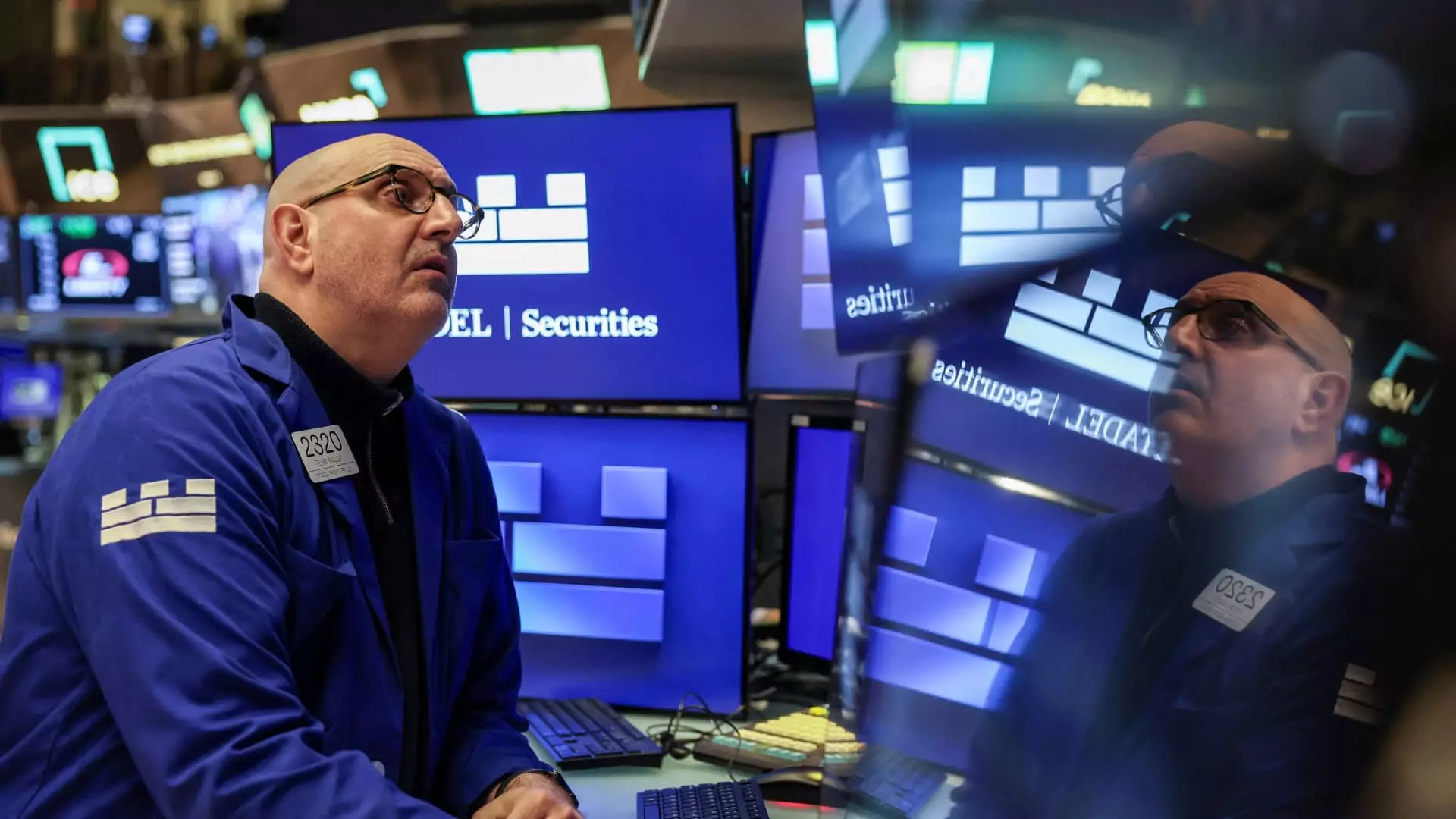As the stock market braces for President Trump’s anticipated address on April 2 regarding tariffs, Wall Street faces a critical juncture. The recent volatility—a term that feels woefully inadequate when capturing the chaos of the market—has left investors in a quagmire of uncertainty. With the S&P 500 languishing over 8% away from its all-time high and the Nasdaq Composite down by more than 13%, one must wonder whether a mere framework of tariffs will provide the solace investors desperately seek. The market’s reaction resembles a rollercoaster ride: unpredictable and at times, terrifying.
What’s troubling is the apparent disconnect between Wall Street’s hopes and the reality that any announcement will likely fall short of clarity. The skepticism is palpable; even seasoned strategists doubt that the president’s address will deliver anything close to the detailed roadmap the market requires. Gabriela Santos from J.P. Morgan Asset Management expresses a sentiment many harbor: a vague outline simply won’t suffice. For investors to momentarily shake off the bearish mood, they need an explicit strategy involving concrete tariffs targeting specific countries for defined durations. Anything less will likely force the press to stay glued to the “sell” button.
A Glimmer of Hope in Seasonal Patterns
Despite the prevailing pessimism, there is a curious light at the end of the tunnel: April’s historical performance. In previous years, a market situated below its 200-day moving average has enjoyed an average upswing of 2.5% during this month, happening 73% of the time dating back to 1950. Yet this historical precedent must be approached with caution. The world has changed since then; the prospect of escalating tariffs introduces new variables into this already complex equation.
Stability derived from past performance may no longer guarantee future results. As investors cling to these hopeful statistics, one must question whether reliance on historical patterns is practical amid unprecedented economic discourse. The tariffs—especially if enacted in a maximalist approach aimed at all 15 countries with trade deficits—could fundamentally alter growth predictions, smashing the expectations of a spring rebound.
The Detrimental Impact of Maximalist Tariffs
The prospect of a broad, aggressive tariff strategy raises conceivably dire implications. Brett Ryan at Deutsche Bank Securities outlines a scenario where the average tariff could elevate from 10.5% to a staggering 16%. This spike raises alarms about inflation and economic stagnation—termed stagflation—a specter that haunts financial analysts. If the ultimate aim is to level the playing field in global trade, one wonders if the strategy could inadvertently destroy domestic growth prospects instead.
The IMF and various economists are already reducing growth forecasts for the S&P 500, anticipating that such moves will not only dent growth but also lead to a dramatic readjustment of equity valuations. These economic tremors are leading some to question whether the current administration has fully considered the long-term repercussions of such aggressive policies.
Spinning a Web of Uncertainty
The looming specter of tariffs brings with it not only economic implications but a web of uncertainty for investors. The “liberation day” anticipated by the administration could quickly morph into a “despair day” should negotiations stretch out without resolution. Christopher Harvey at Wells Fargo Securities warns that navigating these uncharted territories will not be swift, and the risks skyrocket as stakeholders from various sectors grapple with each new demand and counter-demand.
This uncertainty can mitigate investor confidence, resulting in a lack of willingness to engage in buying, thereby stalling any potential recovery. The market’s current trajectory suggests that, even after announcements are made, we are far from solving the underlying issues. However, in a world steeped in uncertainty, perhaps resilience is the new mantra for investors seeking to navigate these turbulent waters.
The reluctance to confront the reality of tariffs suggests a deeper issue with current economic policies. Policymakers must recognize that quick fixes through tariffs will not substitute for the necessary structural adjustments that could foster sustainable growth. The interplay of domestic priorities and international trade dynamics cannot be overlooked—these cannot simply be resolved with brash proclamation but must involve thoughtful, strategic negotiation in an increasingly interconnected world.
In an era where investors are hungering for clear, decisive leadership, they are met with a reality check about the complexities of modern economics. The stakes are monumental, and as the market waits for direction, its reflection can serve as a collective reminder of the delicate balance that needs to be struck in trade policy.

